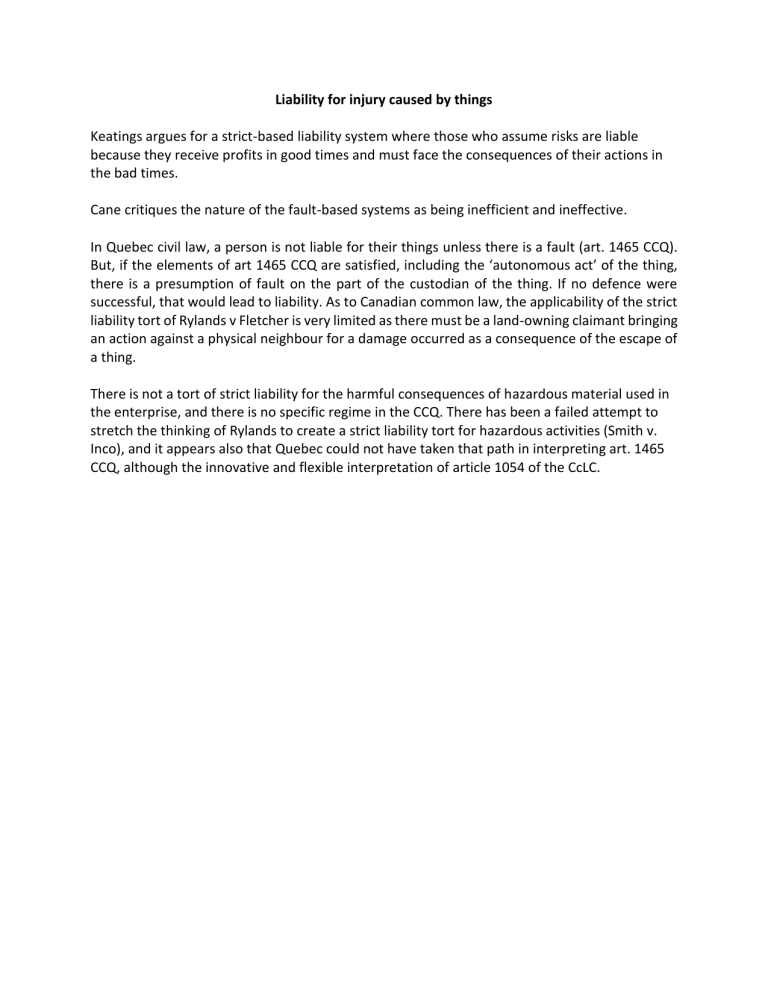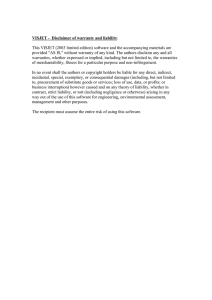
Liability for injury caused by things Keatings argues for a strict-based liability system where those who assume risks are liable because they receive profits in good times and must face the consequences of their actions in the bad times. Cane critiques the nature of the fault-based systems as being inefficient and ineffective. In Quebec civil law, a person is not liable for their things unless there is a fault (art. 1465 CCQ). But, if the elements of art 1465 CCQ are satisfied, including the ‘autonomous act’ of the thing, there is a presumption of fault on the part of the custodian of the thing. If no defence were successful, that would lead to liability. As to Canadian common law, the applicability of the strict liability tort of Rylands v Fletcher is very limited as there must be a land-owning claimant bringing an action against a physical neighbour for a damage occurred as a consequence of the escape of a thing. There is not a tort of strict liability for the harmful consequences of hazardous material used in the enterprise, and there is no specific regime in the CCQ. There has been a failed attempt to stretch the thinking of Rylands to create a strict liability tort for hazardous activities (Smith v. Inco), and it appears also that Quebec could not have taken that path in interpreting art. 1465 CCQ, although the innovative and flexible interpretation of article 1054 of the CcLC.







